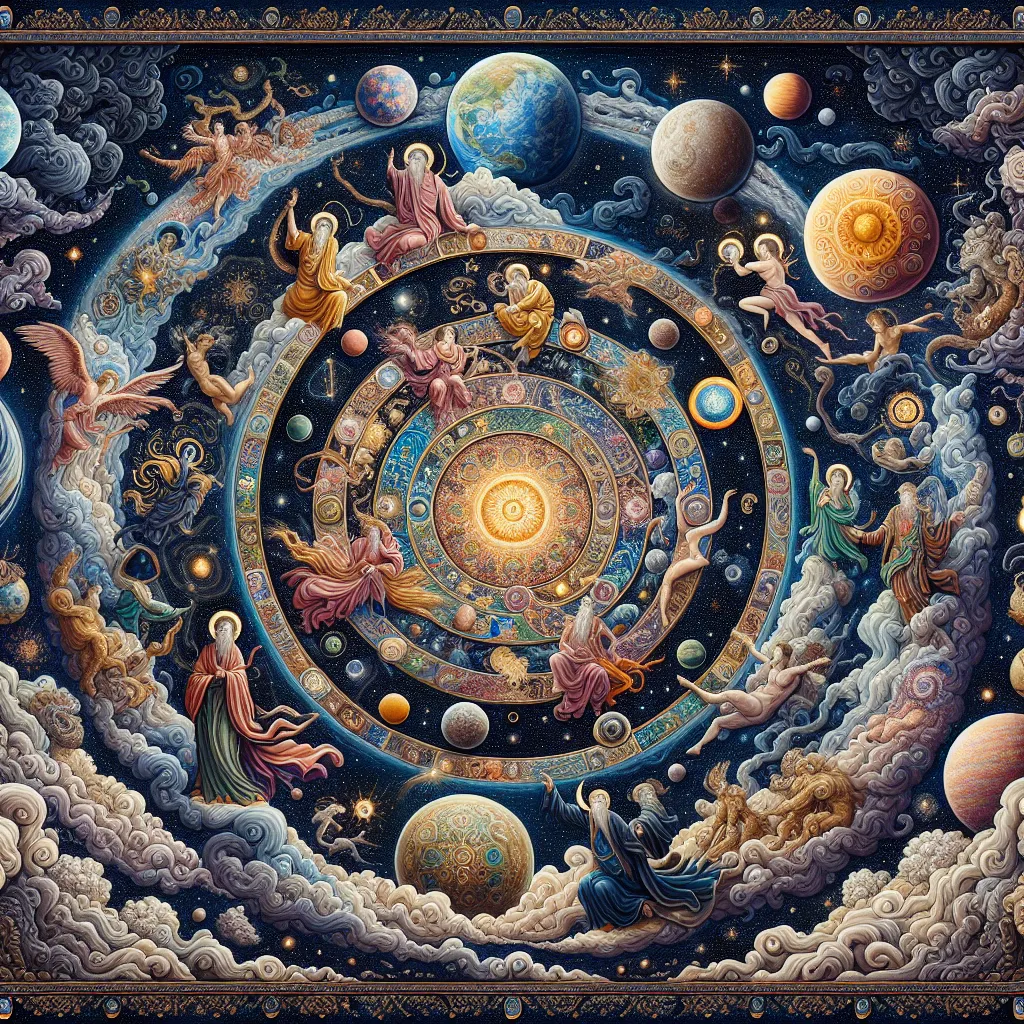
- Published on
- Authors

- Name
- You
The Taoist View of the Cosmos: Understanding the Universe and Its Cycles
In the deeply philosophical and spiritually enriching tradition of Taoism, the cosmos is viewed as a vast and interconnected web of energy. This holistic perspective not only espouses a profound reverence for the universe but also offers a unique understanding of its cyclical nature. Let us delve into the Taoist view of the cosmos, blending advanced science with mystical wisdom, to appreciate how this understanding influences Taoist practices and beliefs.
The Tao and the Cosmos
At the core of Taoist philosophy lies the concept of the Tao (道), often translated as "The Way." The Tao is the fundamental principle that underpins the universe and everything within it. It is both the source and the pattern of all existence, transcending the limitations of language and comprehension.
The Taoist view of the cosmos involves recognizing the intrinsic order and natural flow present in the universe. This order manifests in the seamless cycles of creation, transformation, and dissolution, illustrating a dynamic equilibrium that sustains all life.
The Cyclical Nature of the Universe
Taoist philosophy posits that the universe operates in continuous cycles. These cycles can be observed in various facets of nature, from the changing seasons to the phases of the moon. In Taoism, these cycles are not just external phenomena but integral aspects of existence that influence human life and spirituality.
Examples of Cycles in Nature and the Cosmos
| Cycle | Description |
|---|---|
| Day and Night | The rotation of the Earth brings about the daily cycle of day and night, symbolizing the balance of Yin (阴) and Yang (阳). |
| Seasons | The Earth's orbit around the Sun results in the annual cycle of seasons—spring, summer, autumn, and winter—each representing a phase in the continuous process of growth, maturity, decline, and renewal. |
| Lunar Phases | The moon's phases—from new moon to full moon and back—are emblematic of the cyclical nature of existence, reflecting the principles of waxing and waning inherent in all life forms. |
| Life and Death | In Taoist thought, life and death are seen as part of a larger cycle of existence. Birth is the beginning of a journey, and death is not an end but a transformation to another state of being within the cosmic cycle of rebirth. |
Influence on Taoist Practices and Beliefs
Understanding the cyclical nature of the universe profoundly influences Taoist practices and beliefs. This awareness encourages a harmonious lifestyle aligned with the natural rhythms of the cosmos.
Key Principles and Practices
| Principle/Practice | Description |
|---|---|
| Wu Wei (无为) | A fundamental Taoist principle, Wu Wei refers to the practice of "non-action" or effortless action. It encourages living in accordance with the natural flow of the universe. |
| Yin and Yang Balance | The concept of Yin and Yang represents dualities in harmony. Taoists believe that achieving balance between these opposite forces is crucial for well-being and spirituality. |
| Meditation and Qi Gong | These practices help individuals connect with their inner selves and the cosmic energy (Qi) that flows through all things, promoting physical and spiritual health. |
| Feng Shui (风水) | An ancient practice of harmonizing individuals with their surrounding environment, Feng Shui involves arranging living spaces to promote the flow of positive energy. |
The Intersection of Science and Mysticism
While Taoist cosmology is rooted in ancient wisdom, it intriguingly aligns with modern scientific understanding. For instance, the idea of cyclical patterns and interconnectedness resonates with scientific concepts such as the laws of thermodynamics and ecological systems.
- Thermodynamics: The first and second laws of thermodynamics, which describe the conservation and transfer of energy, can be seen as scientific counterparts to the Taoist view of cyclical energy flow.
- Ecology: The interdependence of organisms within ecosystems mirrors the Taoist belief in the interconnectedness of all life forms.
This intersection of science and mysticism underscores the timeless relevance of Taoist thought and its ability to offer profound insights into both the mysteries of the cosmos and the practicalities of everyday life.
Conclusion
The Taoist perspective on the cosmos, with its emphasis on cyclical patterns and harmonious living, provides a rich tapestry of wisdom that continues to inspire and guide individuals across the world. By blending advanced science with mystical insights, Taoism invites us to cultivate a deeper connection with the universe and to live in harmony with its ever-changing rhythms. Whether through meditative practices, ecological awareness, or the pursuit of balance, the Taoist view of the cosmos beckons us to embrace the timeless dance of existence.
